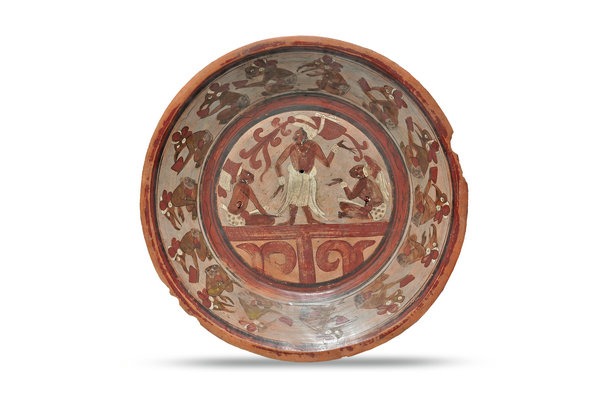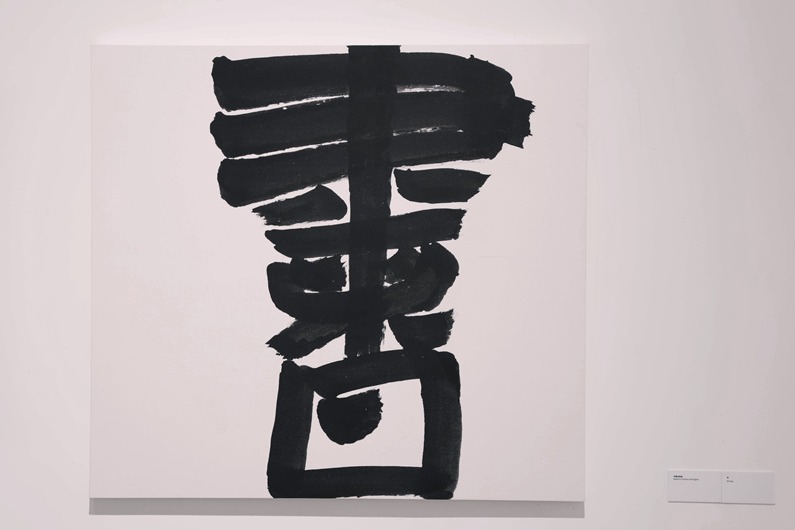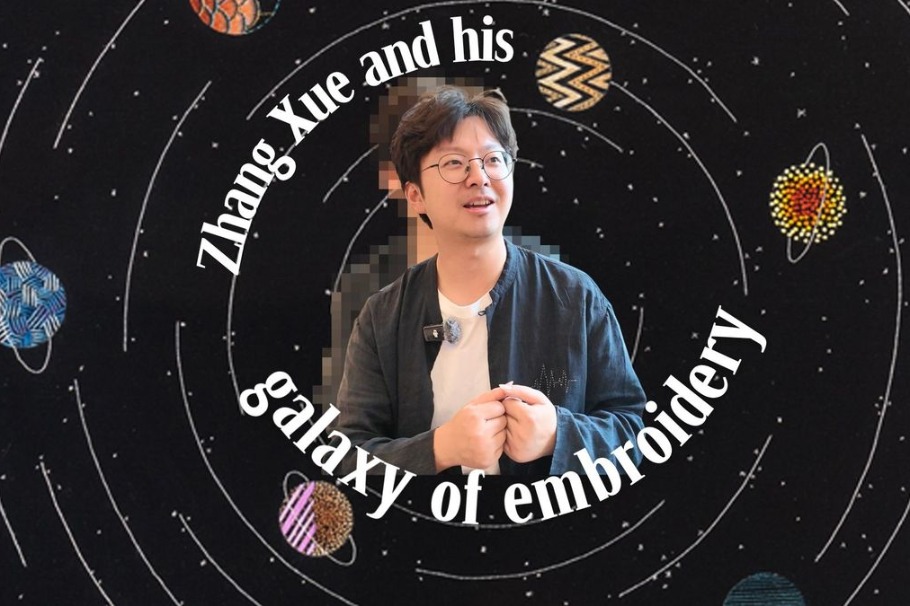Yang Yuxiao preserves Linhai paper cutting legacy through innovation and tradition

After quitting her job as an international trader in Paris, France, Yang Yuxiao returned to her hometown in Zhejiang province, breathing new life into the ancient art of Linhai paper cutting. By blending her family's rich heritage with contemporary techniques, she is ensuring that this traditional craft not only survives but thrives.
Yang, who earned a degree in French from Xi'an International University in 2011 and later pursued a master's in trade in France, initially worked in international trade, focusing on importing crafts and artworks. Yet, after five years, she realized this path wasn't what she truly wanted.
"After spending a long time in France, I often feel like a wanderer in a foreign land. I missed the warmth of home and longed for my family," she said.
In 2016, Yang made a life-changing decision to return to her hometown of Linhai city in Zhejiang province, and take over the Zhang Xiujuan Paper Cutting Museum, founded by her mother, a respected figure in this intangible cultural heritage.
Linhai paper cutting, recognized as part of Zhejiang's intangible cultural heritage since 2007, was in need of both preservation and innovation.
"Linhai paper cutting is a family tradition," Yang said. "My mother is an intangible cultural heritage bearer. As her only child, it's up to me to continue this legacy. Linhai paper cutting faces challenges and needs a younger person to take over. I felt I could help my mother in my own way, not just by doing paper cutting, but by supporting her efforts."
Driven by familial duty, Yang tackled the challenge of traditional paper's vulnerability to humidity and fading. She experimented with new materials like silk and cashmere cotton, and secured 13 national patents for her innovations.
"Our silk paper cutting was a breakthrough because we patented the process of using silk instead of paper, giving the material a new meaning. It has become one of our bestselling products," the 36-year-old said.
One of the challenges Yang has met was balancing the working relationship with her mother.
"It's not about the technical aspects, but how we manage our internal operations. We've had to learn to work as partners, setting aside our mother-daughter relationship to reduce communication barriers," Yang said.
Zhang Xiujuan, Yang's mother, said, "I'm concerned about high costs and potential losses because innovations require experimenting with new materials. This is time-consuming but I support her."
"I empathize with my daughter's hard work. For preserving cultural heritage, it's necessary. Most of my regular customers are my age. They typically don't make purchases. But when they do, they choose expensive paper-cuts. Younger people aren't interested, which could affect future sustainability."
Yang's time in France profoundly influenced her approach to paper cutting. "Living in France for years exposed me to different perspectives, shaping my aesthetic," she said. "While my mother focuses on traditional aspects, my role is to innovate. I want to do more than just preserve. I want to transform."
Having grown up surrounded by paper cutting, Yang developed a passion for the craft at a young age.
"As a child, I really enjoyed paper cutting and would often play around with scissors, cutting things just for fun. In middle school, my mom taught arts and crafts at the school, specializing in paper cutting, and I was one of her students. Once I started high school, I didn't have much time for paper cutting. However, whenever I had a bit of free time, I'd indulge in it for a while to relax and enjoy my leisure."
Today, Yang has creatively integrated traditional techniques with modern applications, designing patterns for contemporary products like bags, coasters, earrings and cloud shoulders, also known as shawls, a treasure of traditional Chinese clothing.
She aims to integrate functionality into the art, making it relevant to everyday life. "We need to transcend the limitations of traditional paper cutting, which is often seen as purely aesthetic. This is a continuous journey, requiring daily reflection and innovation."
"I love seeing my ideas come to life quickly. To sustain our intangible cultural heritage work, we need products that can support us financially," she said.
Gift orders have become her main revenue source.
"We categorize our work into different levels. Collectible pieces are crafted by me and my mother, while cultural gifts, needing hundreds of pieces, are made by hired artisans. We employ about 30 people, most of whom are craft teachers on a project basis, as maintaining a large permanent staff would be too costly."
She also sees great potential in educational experiences. "We'll boost our ability to host educational and team-building events, allowing more people to experience paper cutting."
She has launched initiatives to teach Linhai paper cutting skills to villagers, providing new income opportunities for them. Over 150 training sessions have been held, with more than 2,000 participants completing the courses.
Yang also offers regular livestreamed paper-cutting classes to international audiences. She has taught over 1,000 people from countries such as the United States, Spain and Hungary, and has participated in cultural exchanges abroad. The most recent visit was to South Korea in June.
"In the future, we aim to transform Linhai paper cutting from mere wall art into something young people appreciate. By integrating it into everyday scenes, we believe it can gain wider recognition and interest. We're working to bring Linhai paper cutting into the lives of the younger generation," Yang said.




































